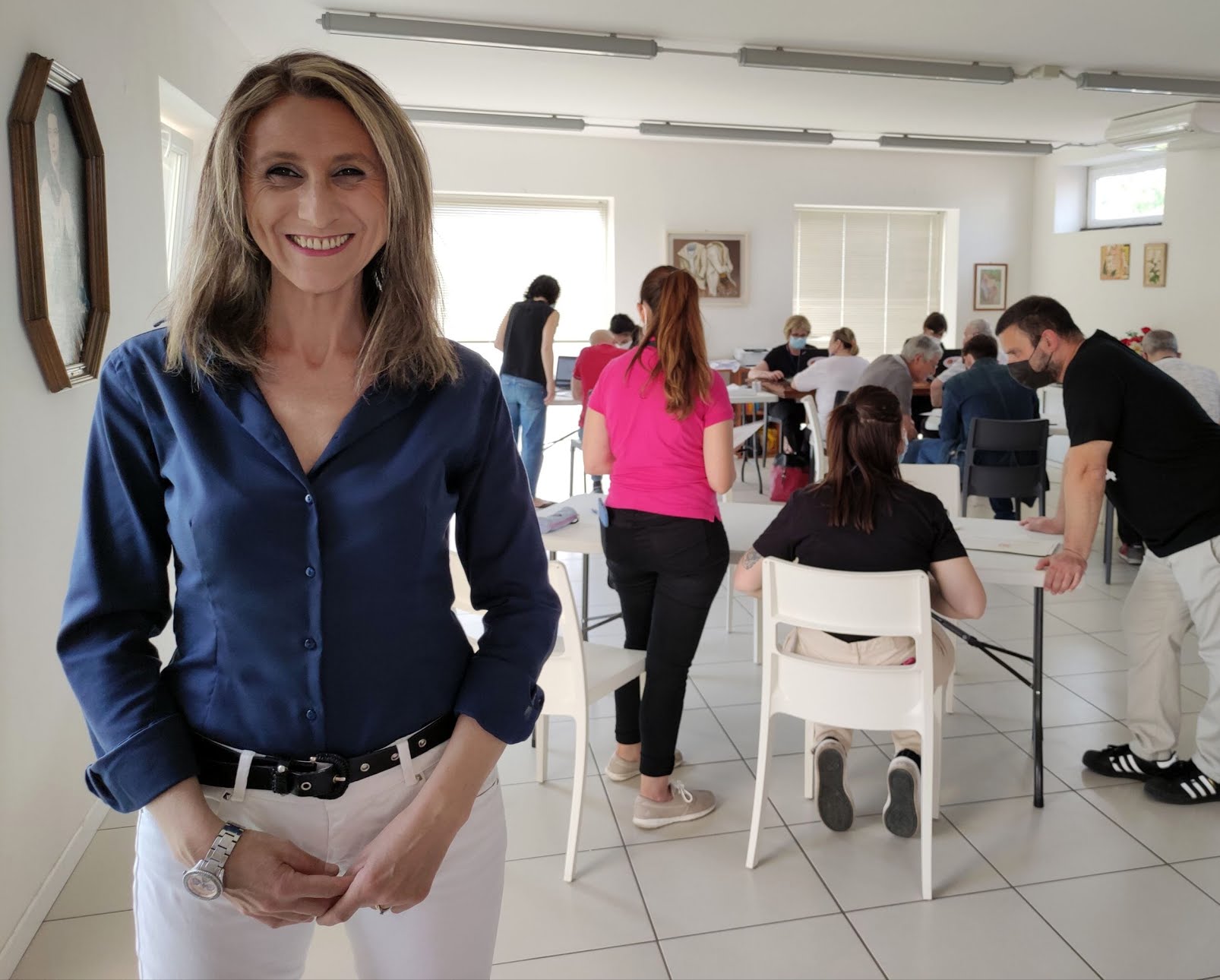
Arezzo is a city of 99,000 inhabitants located on the hills of Tuscany. It has joined the UserCentriCities project in 2022 and has ambitious goals to put citizens' needs at the centre of the city's digital transition.
Why did you join UserCentriCities?
Monica Manneschi, deputy mayor responsible for technological innovation, simplification of administrative procedures, and housing policies in Arezzo
Since I joined Arezzo’s administration almost two years ago, my first goal has been to have an approach that would engage with our residents. It was essential for me that the public administration took a step toward the people and not the other way around.
So, the main reason we joined the project was the need to improve our public services. Particularly we were interested in identifying relevant indicators to monitor our progress in this field. We also wanted to meet others who, although from a different context, have the same goal: putting people at the centre of the digital transition.
And finally, I would like the role of public authorities in the digital transition, particularly medium-sized ones like Arezzo, to be recognised and better supported by the European political debate because, at the moment, there is a gap between big metropolitan cities and medium and small municipalities.
Speaking of indicators, what do you think of the UserCentriCities dashboard? How is it useful, and how can it be improved?
Monica Manneschi
The dashboard is essential because indicators allow us to understand what we are doing right and to grow. Now, for us, it would be crucial that they would also consider the local context. The size of the city can impact how it scores because of fewer resources, but its socio-economic approach can also have an effect. Arezzo, for example, is a historic city with a strong tradition in industry and crafts, which influences its approach to the digital transition.
Some indicators are more difficult to estimate, like the environmental impact of offline and online services. For example, I would like to know more about how Milan has come up with theirs. It is even more critical to set clear and detailed indicators in similar cases.
Gianni Rossi, manager of the service support to governance, innovation and European Union policies in Arezzo
Two elements make the environmental impact indicator a tricky one. One is finding a common metric to evaluate it; otherwise, everyone talks about themselves, and it becomes impossible to compare each others. The other is to understand the causality link between the effect of the digital transition and other elements that impact the environment too.
Monica Manneschi
Of course, we think it’s an important indicator, especially in this historical time, but we have some reservations regarding our and other cities’ ability to monitor and evaluate it reliably.
Where is Arezzo in its digital transition journey? What user-centric projects have you been working on?
Monica Manneschi
The transition to digital public services, which I am responsible for, is a key priority for our city, which aims to become a virtuous digital public administration as well as an inclusive and resilient city by 2030. Sharing experiences and concrete examples of urban digital transition will support us in the achievement of our objectives.
The project we are most proud of is the Digital Grandparents – or Nonni Digitali in Italian – which aimed to engage with locals who, because of their age or for other reasons, are vulnerable. So, we wanted to bridge this gap. The project involved other departments and local organisations and brought the older generation in touch with youngsters having an impact on the digital and social transition.
Another project we are proud of is our public Whatsapp with locals channel, which has received several awards. It is an informal way locals can use to get in touch with our services, and it has dedicated officers who take care of responding to people’s requests and needs.
The feedback from locals has been very positive for both projects, which makes us happy because it means we are achieving our objective.
Have you seen examples of projects in UserCentriCities that have inspired you?
Gianni Rossi
We liked Porto’s example of a comprehensive city card, which allowed cardholders to access both administrative services and other public services in the city.
Monica Manneschi
But it wasn’t adaptable to our context as many of our touristic services rely on city foundations.
The project has published The State of UserCentriCities, an analysis of the state of citizen-centric digital public services. What did you think of it?
Gianni Rossi
The report has highlighted some aspects of the Benchmarking Dashboard that cities struggle to bring forward. For example, what we already said about the environmental impact evaluation. But also, challenges to calculate people’s monetary and time savings thanks to the switch to new digital models.
The report also stresses the importance of introducing a new staff member who is an expert in designing digital services. Of course, if the resources allow it, this would be the best-case scenario, but for medium cities like Arezzo, even having one expert is challenging. We would suggest training existing and motivated staff to reach the same goal.
What is in store for the future?
Monica Manneschi
We have more ambitious goals for the future. We are working on setting up a new model of user-centricity i.e. a City App which will become a single access point for all digital municipal services and urban monitoring ones. This will be a digital interface that will also work as a communication and interaction channel with locals.
How can UserCentriCities help you get to the next level?
Monica Manneschi
The project supports us with resources to achieve our goals. Through it, we also become part of a network of best practices that can inspire and teach us how to improve. And, of course, it helps us bring our experience and point of view to the European level.